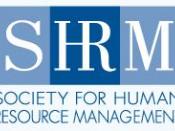Introduction"Human resource management" (HRM) has been frequently used for about the last ten to fifteen years. Earlier, the field was commonly known as "personnel administration." Personnel administration that emanated as a clearly defined field by the 1920's; was amply concerned with the technical aspects of hiring, evaluating, training, and compensating employees and was very much of "staff" function in most organizations. The occupation did not ordinarily focus on the relationship of diversified employment practices on altogether organizational performance or on the systematic relationships among such practices. Further, it lacked an integrative paradigm.
But, HRM matured in response to the tangible increase in competitive pressures business organizations all over the globe began to experience by the late 1970s as a result of such factors as globalization, deregulation, and rapid technological change.
Toil on international HRM breaks down into three important categories: HRM practices and expatriate employees in multinational corporations (Macs), HRM practices and host-country nationals as employees of MacsRelative Employment SystemsA climacteric issue in HRM and host-country nationals (HCNs) is the breadth to which an MNC choose to transfer its national or global HRM system to a specific subsidiary or let the subsidiary to develop or maintain present employment practices rooted in autochthonous practices.
This seems to hold fast upon a range of factors, including the fabrication of the MNCs market, that is Whether it is a globally unified or diverse organization, The significance of a given subsidiary to the MNC's overall operations. The significance of specific employee behaviors as the MNC's source of competitive advantageThe degree to which the MNC controls the subsidiary like in joint-venture situations. The extent to which host-country culture and employment laws differ from those of the MNC's home country. The greater the differences, the less likely the transfer of home country practices (Taylor,


